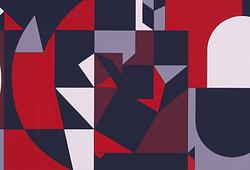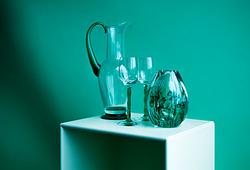JÖNS EFVERBERG'S MASTERPIECE, Stockholm 1775, Gustavian commode.
Veneered with colored birch, jacaranda, amaranth, rosewood, plum tree, buxbom, lemon tree, maple and colored poplar. Gilt brass mounts. Three drawers. Length 93, width 50,5, height 84 cm. Key included.
Keys included.
Literature
Sylvén, Torsten, Mästarnas möbler, Värnamo 1996, the lot depicted page 104.
More information
A REMARKABLE MASTERPIECE BY JÖNS EFVERBERG FROM 1775
Jöns Efverberg’s masterpiece from 1775 is remarkable in several ways. It was the second masterpiece made in the modern Neoclassical Gustavian style after Georg Haupt's writingdesk in 1770. It was also unusual to make a commode as a masterpiece. The most common masterpiece since the beginning of the 18th century was a large cabinet. Only four cabinetmakers made a commode as a masterpiece. In addition to Jöns Efverberg, it was Johan Neijber’s Rococo commode in 1768, Anders Lundelius commode in 1778 and Anders Ollén’s Gustavian commode in 1786.
Efverberg's commode shows strong influences of the intarsia motifs from a commode (in fact a disguised bed used by Gustav III:s night guard) made by Georg Haupt during the first half of the 1770’s.The intarsia motifs shows on the front an urn with rams heads and laurel garlands, the sides with urns with curved flutings. Georg Haupt had, in turn, gained inspiration for the intarsia during his years in London 1768/69, where his Swedish fellow cabinetmaker and traveling companion Christopher Fürloh had made a commode with such urns in 1767. Fürloh's sketch for the commde is preserved in the esate of the English cabinetmaker John Linnell. It is likely that both Fürloh and Haupt were active in Linnell's workshop. Fürloh's commde from 1767 is preserved in The Castle Howard Collection in England.
It is known that Efverberg was abroad as an apprentice during the 1750s, but where he went is not known. His choice of figural intarsia, a fruit plate, on the top of his masterpiece is unusual. Often the Swedish commodes had stone tops or only veneered with geometrical patterns. His technique of creating shadows on the fruits by darkening the veneer in hot sand was more common among foreign cabinetmakers. Probably, he learned this method during his years abroad. On his masterpiece there is also his characteristic thin leaf band which runs along the edges of the top. It appears on several of his furniture and can be used to identify his unsigned work.
Even though Jöns Efverberg (born in Skåne in 1729) did not become a master within the traditional guild until 1775, he was appointed master within the Hall and cabinetmaker at the Queen’s Palace (Drottningholm) in 1770. Five years later, he joined the Stockholm cabinetmaker guild through his masterpiece in 1775.







































































